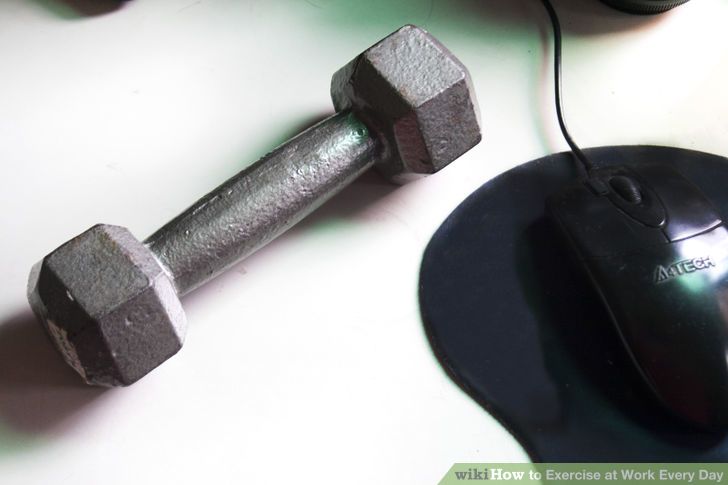How to Exercise at Work Every Day
Many people find it hard to get the recommended 175 minutes of moderate cardiovascular and strength-training exercise per week. This exercise helps reduce the risk of weight gain, loss of bone mass, type 2 diabetes, stress and heart disease. If you find you are unable to work out when you get home, then you may be able to squeeze exercise into your daily work routine. You may find it relieves work-induced stress or muscle tension and improves your day. There are a number of ways you can start to exercise at work. Read more to find out how to exercise at work every day.
1 Ask your Human Resources department if your work has a wellness plan.
Swedish studies have shown that workplace exercise boosts productivity and decreases sick leave, so many modern companies have started office gyms or incentives for weight loss. This may also make it easier to have active work breaks.
2 Understand your workout preferences.
Although a half-marathon may be a good way to lose weight, the best exercise regime is the 1 you enjoy and can stick with in the long term. Make a list of 3 or 4 cardiovascular, strength-training or isometric exercise programs you enjoy or you would like to try.
Popular exercises include fast walking, jogging, cycling, using the elliptical, stair climbing, jump roping, yoga, pilates, tai chi, qigong, sit ups, push ups, weightlifting, resistance band training, ballet, Zumba, hip hop or Latin dancing and kick boxing.
3 Keep in mind that you should alternate cardiovascular training,
such as fast walking or cycling, with strength-training or isometrics, such as weights, yoga or isometric exercise. Alternating workouts will also make you less likely to get bored with your workouts. Choose 1 of the following ways to get your daily exercise:
Join a gym near your work. If it is within a few blocks, you can work out for 30 minutes and return to work and your lunch. This is the best option if you prefer to work out in a gym atmosphere, take classes or use exercise equipment.
Find a space where you can exercise in privacy at work. This may be as simple as an unused meeting room or a large utility closet. Talk to your boss or office manager, if you do not know of a suitable space. Try to find a room with a door that can be shut and blinds that can be closed. This is a great option if you want to lift weights, do resistance band training, do yoga or pilates or play an exercise video on a computer.
Exercise outside of your office. Depending upon where you live, you may only have this as a seasonal option. This is a great way to get sunshine, clean air and exercise if you want to walk, jog or cycle. Some people even find a place to do yoga in the park. 10 to 20 minutes of direct sunlight on exposed skin can create mood-enhancing vitamin D.
Work out occasionally at your desk. You can do isometric and range-of-motion exercises at your desk. This should not be considered an entire workout regime, but it is a great way to fit in strength-training and release tension during very short breaks.
4 Keep a change of clothes and athletic shoes in your desk at the office.
Most exercises should be done in flexible clothing and shoes with cushioning and arch support. Take your gym clothes home if they are very sweaty and replace them with clean ones immediately.
5 Ask a colleague, or colleagues, to join in your mission to exercise every day.
Studies have shown that partnering in an exercise or weight loss goal aids people in meeting their goals. You can encourage each other to keep your commitment.
6 Eat a snack 1 and a half hours before you intend to exercise.
This will avoid a hunger pangs if you intend to work out before lunch. It is not a good idea to work out on a full or completely empty stomach.





